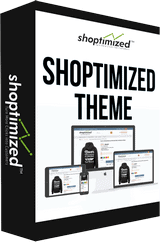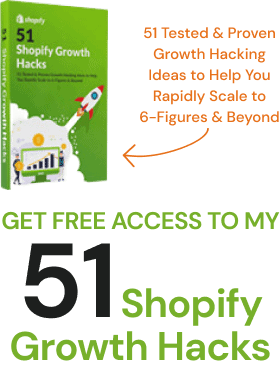Customer acquisition is king in growth hacking your e-commerce store, but what happens once a new customer has made their first purchase? Learn more about the e-commerce customer loyalty programs growth hacker’s guide.
If you’re like a lot of Shopify store owners I’ve worked with, most were so focused on front-end traffic and bringing in new customers that they were too busy to focus any attention on maximizing the lifetime customer value of the customers they’ve already got.
If new customer acquisition has been your sole focus, you might be shocked to learn that it costs roughly 5-25X more to bring in a new customer than it does to sell to an existing one.
Not only that, but existing customers spend 67% more than new customers.
In fact, a Bain & Company report found that acquiring a new customer costs six to seven times more than keeping an existing one. And that businesses that boosted customer retention rates by as little as 5% saw a lift in their profits from 5% to a staggering 95%!
And with 82% of U.S. adults saying they’re loyal to brands it makes sense to shift some of your attention to retaining and nurturing your existing customers.
Turning Existing Customers To Long-Term Customers
So, turning your existing customers into long-term repeat customers can be the most cost-effective way to growth hack your business.
With this in mind, it stands to reason that building a loyalty program will pay for itself over and over…
But how do you create e-commerce loyalty customer programs that engage your customers and builds brand loyalty?
Well, the secret to successful e-commerce customer loyalty programs was recently uncovered by professors Joseph Nunes and Xavier Dreze. Their research, entitled “The Endowed Progress Effect”, looked at how artificial advancement affects customer motivation when it comes to loyalty programs. The experiment was carried out at a car wash. The professors handed out 300 loyalty cards. Each time a customer got a car wash they’d receive a stamp on their loyalty card. Once all the slots had been stamped they could redeem a free car wash.
But what they cleverly did was hand out two different kinds of cards. The first group received cards that had eight available slots, and the other group had ten with two pre-stamped slots. The pre-stamped slots were pitched as a free bonus to the recipients.
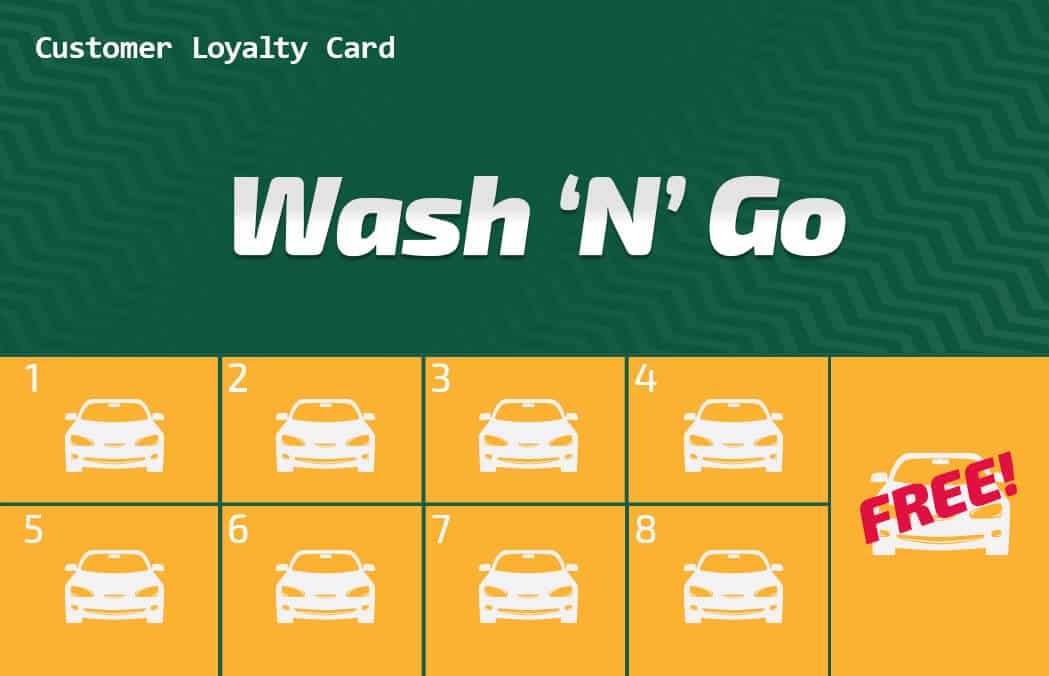
Both groups needed to get the same number of stamps (eight). What’s really interesting is that the second group had nearly double the rate of loyalty card completion – 34% vs 19%. Why?
The second group had a two-slot head start which the professors concluded was enough of an artificial “leg-up” to motivate them to complete the card. It seems that in their minds, they had already negotiated one of the biggest mental barriers – getting started.
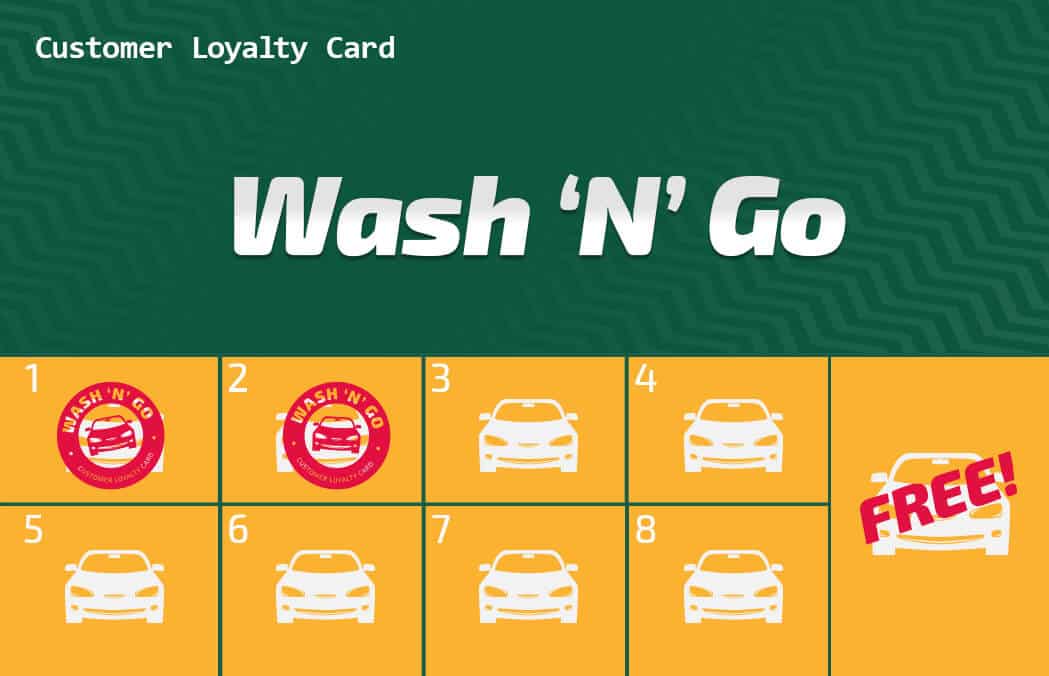
I would also suggest that the law of reciprocity plays a part here. Because the second group felt they needed to repay the kindness of the two free stamps. Arguably, the psychological principle of commitment and consistency also plays a part here. Because the two bonus stamps made users feel like they needed to complete what had been started.
So what does this research tell us about how loyalty programs can be rigged to improve response?
- Have a clear goal – Unless there is a finish line in sight, with a goal that is achievable and aligned with the customers’ desires. Then they won’t be motivated enough to see it through.
- Decide what customers should do to progress – This is where many e-commerce stores get it wrong because they try to overcomplicate things. For the most part, making a purchase should be the only rewarded behavior. Social sharing should be rewarded with a monetary incentive, not loyalty points.
- Pitch the artificial advancement as a bonus – Dreze and Nunes’ study revealed that artificial advancement only works if there’s a valid reason why people were receiving the unexpected leg-up. If points were seemingly being handed out willy-nilly, it would fail. Your reasons for advancement can be simple, like a new customer bonus. But it is important to clearly communicate why you’re giving away the bonus points.
Here are the top 3 easiest ways for you to implement an effective loyalty program:
1. Reward with a simple points system
The points system is the simplest way to reward your customers. This is because it’s based on a simple principle – spend more to get more.
Every time a customer makes a purchase from your store, they get points in relation to the amount they have spent.
The important thing to remember here is to make the point system super easy for customers to understand and calculate, spare them the mental arithmetic.
Keep it simple so they earn one point for every $1 or $10 they spend, for example.
This way customers can understand how it works straight away and whether it’s worth taking part in the program.
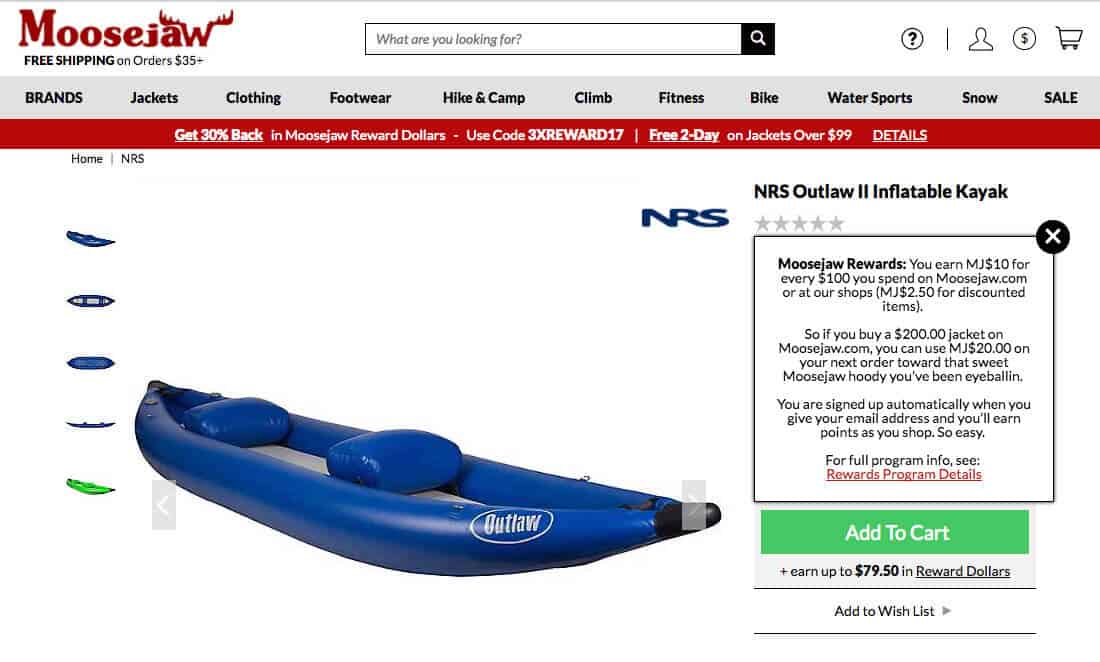
Moosejaw is probably the best example of a points-based system. Every $10 dollar spent earns the customer 1 MJ$. Moosejaw understands its audience by measuring points in dollars and rewards them with MJ dollars. And customers can use them to spend more on the stuff they love. (not random, not unrelated free gifts that may not be desirable).
2. Tiered Rewards
Finding the right balance between attainable and desirable rewards is a challenge for most e-commerce loyalty programs. A tiered system is a good way to reward your customers for their initial loyalty and encourages more purchases.
This works by offering small rewards as an entry point for being part of the program. And then repeat purchases are incentivized by increasing the value of the rewards as the customer climbs up the loyalty ladder. This helps solve the problem of members forgetting to redeem their points because the time between purchase and gratification is too long.
The main difference between the simple points system and a tiered system is that customers extract short-term versus long-term value from the loyalty program.
Psychologically, peer approval plays a part here because attaining your top-tier status can be boasted at as a status symbol by your most loyal customers.
Sephora’s Beauty Insider program helped transform them into one of the most relevant retail brands today.
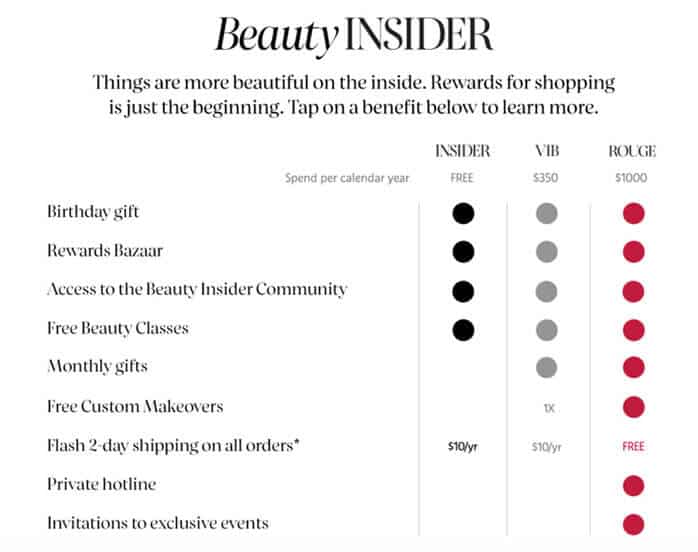
3. A value-based e-commerce loyalty programs
Truly understanding your customers is paramount to keeping them on the side whilst you grow and expand. This means having an understanding of what they value the most. And you only need to look at Apple to see that shared values have a huge impact on if a customer will be loyal to a brand. Their customers are often fiercely loyal to their beliefs of creating simple but effective products that look beautiful.
In fact, a survey by CeB revealed that customers were loyal “not to companies, but to beliefs.” This is huge if you think they’re in love with your brand because your brand may remain but if consumers feel your beliefs and values have changed, you may lose them.
Depending on your niche, your customers may, in fact, get more value in non-monetary or discounted rewards.
Here’s the thing, any store can offer discounts and coupon codes but stores that can provide value to the customer in ways other than cash have a unique opportunity to connect with their audience.
TOMS Shoes is a great example of this, the scheme started with TOMS donating a pair of shoes to a child in need for every pair purchased, but it’s since grown to help provide clean water access and improving maternal health care.
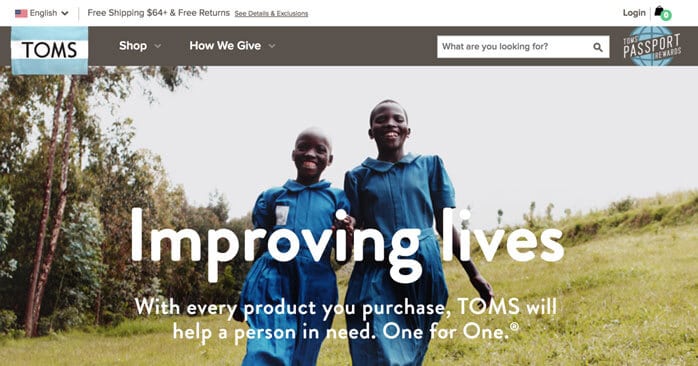
Getting e-commerce customer loyalty programs up and running is easy with apps like Swell. So, go get it done 🙂
Still stuck on getting customers in the first place? The Shopify theme store can be a daunting place to find the premium Shopify themes. That’s why we’ve made it simple to choose a high-converting theme with Shoptimized™. It has 30+ conversion boosting features to help you turn more clicks into customers.

